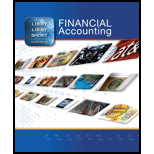
1.
Identify the amount that will be available in the four years.
1.
Explanation of Solution
Future value:
The future value is value of present amount compounded at an interest rate until a particular future date.
Identify the amount that will be available in the four years:
Therefore, the amount that will be available in the four years is $79,997.
2.
Prepare
2.
Explanation of Solution
| Date | Account Titles and Explanation |
Debit (Amount in $) |
Credit (Amount in $) |
| Savings Account | 58,800 | ||
| Cash | 58,800 | ||
| (To record the cash deposited by Mr. A in savings account) |
(Table 1)
- Savings account is an asset and there is an increase in the value of an asset. Hence, debit the savings account by $58,800.
- Cash is an asset and there is a decrease in the value of an asset. Hence, credit the asset by $58,800.
3.
Compute the total interest for four years.
3.
Explanation of Solution
Therefore, the total interest for four years is $21,197.
4.
Provide the journal entry that Mr. A should make on (a) December 31, 2014 (b) December 31, 2015.
4.
Explanation of Solution
Journal:
Journal is the method of recording monetary business transactions in chronological order. It records the debit and credit aspects of each transaction to abide by the double-entry system.
Accounting rules for journal entries:
To record increase balance of account: Debit assets, expenses, losses and credit liabilities, capital, revenue and gains.
- To record decrease balance of account: Credit assets, expenses, losses and debit liabilities, capital, revenue and gains.
Prepare journal entry to record that Mr. A should make on December 31, 2014:
| Date | Account Titles and Explanation |
Debit (Amount in $) |
Credit (Amount in $) |
| Savings Account | 4,704 | ||
| Interest revenue (1) | 4,704 | ||
| (To record the interest revenue earned during December 31 in first year for deposit made) |
(Table 2)
- Savings account is an asset and there is an increase in the value of an asset. Hence, debit the savings account by $4,704.
- Interest revenue is a component of
stockholder’s equity and there is an increase in the value of revenue and equity. Hence, credit the interest revenue by $4,704.
Working Note:
Prepare journal entry to record that Mr. A should make on December 31, 2015:
| Date | Account Titles and Explanation |
Debit (Amount in $) |
Credit (Amount in $) |
| Savings Account | 5,080 | ||
| Interest revenue (2) | 5,080 | ||
| (To record the interest revenue earned during December 31in second year for deposit made) |
(Table 3)
- Savings account is an asset and there is an increase in the value of an asset. Hence, debit the savings account by $5,080.
- Interest revenue is a component of stockholder’s equity and there is an increase in the value of revenue and equity. Hence, credit the interest revenue by $5,080.
Working Note:
Want to see more full solutions like this?
Chapter 9 Solutions
Financial Accounting, 8th Edition
- How much is the standard cost per direct labor hour for variable overhead?arrow_forwardPlease provide the answer to this general accounting question with proper steps.arrow_forwardThe Frida Corporation reported total manufacturing costs of $245,000; manufacturing overhead totaling $68,000 and direct materials totaling $57,000. How much is direct labor cost?arrow_forward

 AccountingAccountingISBN:9781337272094Author:WARREN, Carl S., Reeve, James M., Duchac, Jonathan E.Publisher:Cengage Learning,
AccountingAccountingISBN:9781337272094Author:WARREN, Carl S., Reeve, James M., Duchac, Jonathan E.Publisher:Cengage Learning, Accounting Information SystemsAccountingISBN:9781337619202Author:Hall, James A.Publisher:Cengage Learning,
Accounting Information SystemsAccountingISBN:9781337619202Author:Hall, James A.Publisher:Cengage Learning, Horngren's Cost Accounting: A Managerial Emphasis...AccountingISBN:9780134475585Author:Srikant M. Datar, Madhav V. RajanPublisher:PEARSON
Horngren's Cost Accounting: A Managerial Emphasis...AccountingISBN:9780134475585Author:Srikant M. Datar, Madhav V. RajanPublisher:PEARSON Intermediate AccountingAccountingISBN:9781259722660Author:J. David Spiceland, Mark W. Nelson, Wayne M ThomasPublisher:McGraw-Hill Education
Intermediate AccountingAccountingISBN:9781259722660Author:J. David Spiceland, Mark W. Nelson, Wayne M ThomasPublisher:McGraw-Hill Education Financial and Managerial AccountingAccountingISBN:9781259726705Author:John J Wild, Ken W. Shaw, Barbara Chiappetta Fundamental Accounting PrinciplesPublisher:McGraw-Hill Education
Financial and Managerial AccountingAccountingISBN:9781259726705Author:John J Wild, Ken W. Shaw, Barbara Chiappetta Fundamental Accounting PrinciplesPublisher:McGraw-Hill Education





